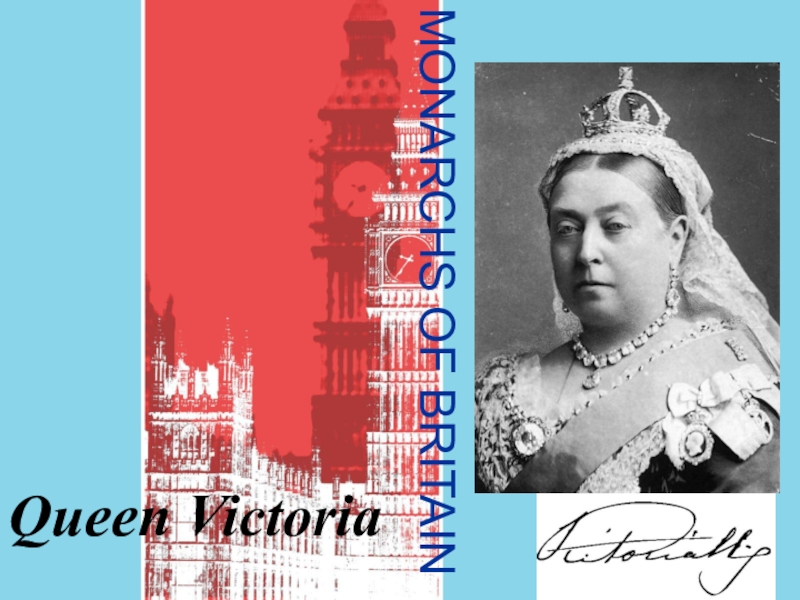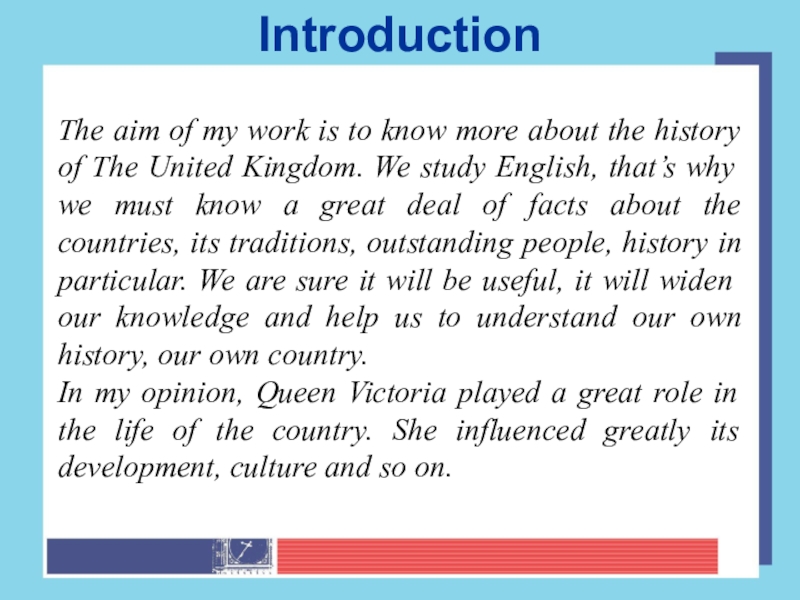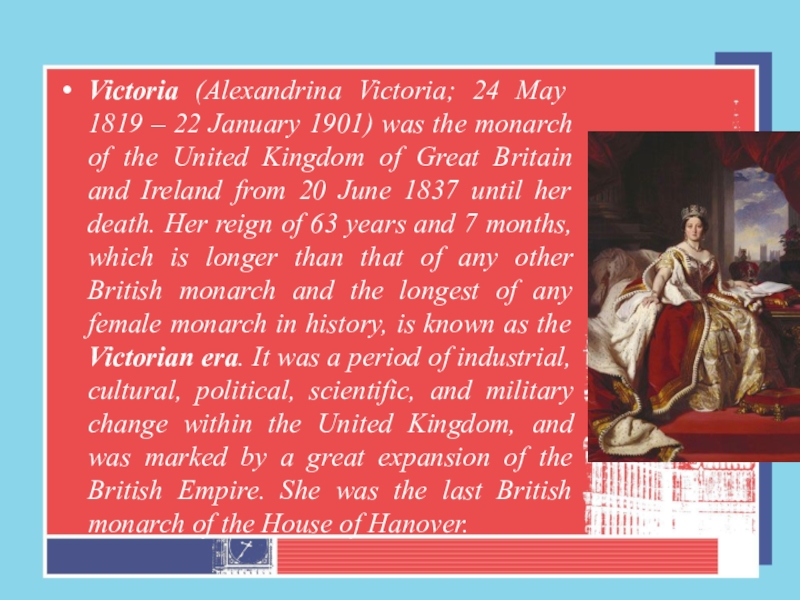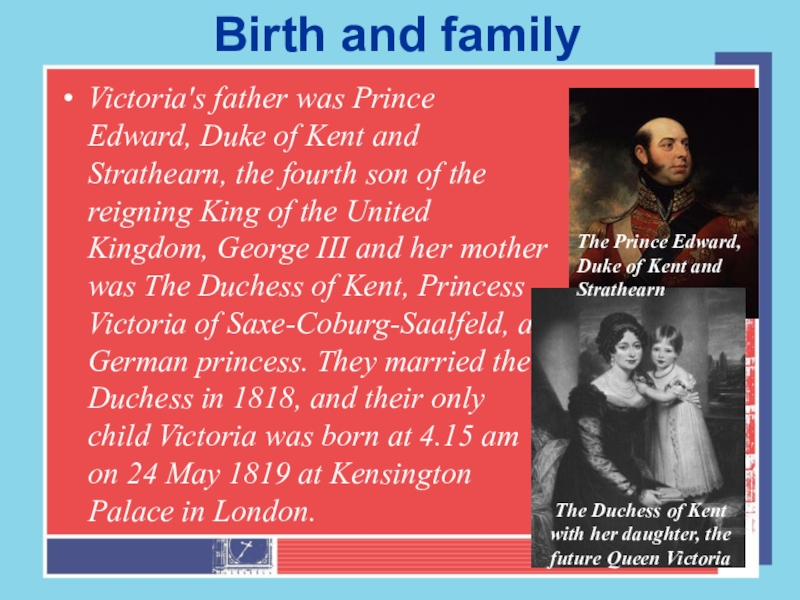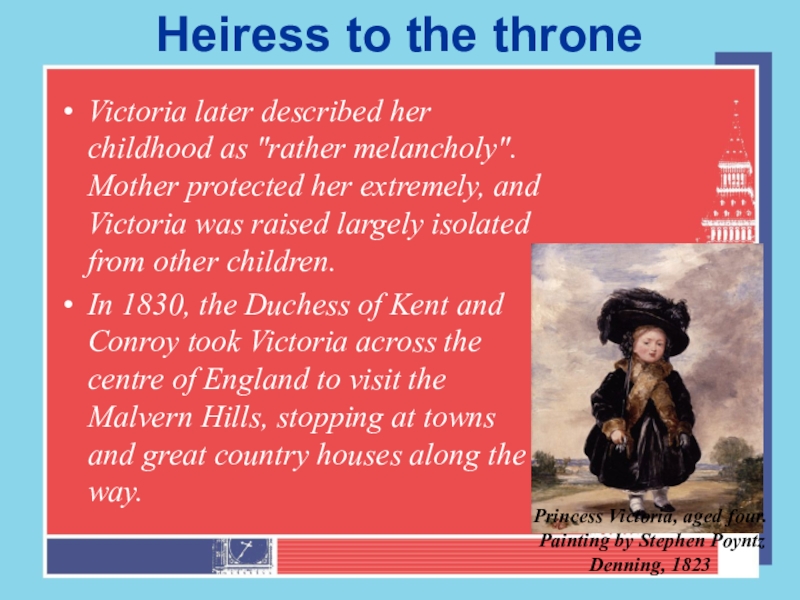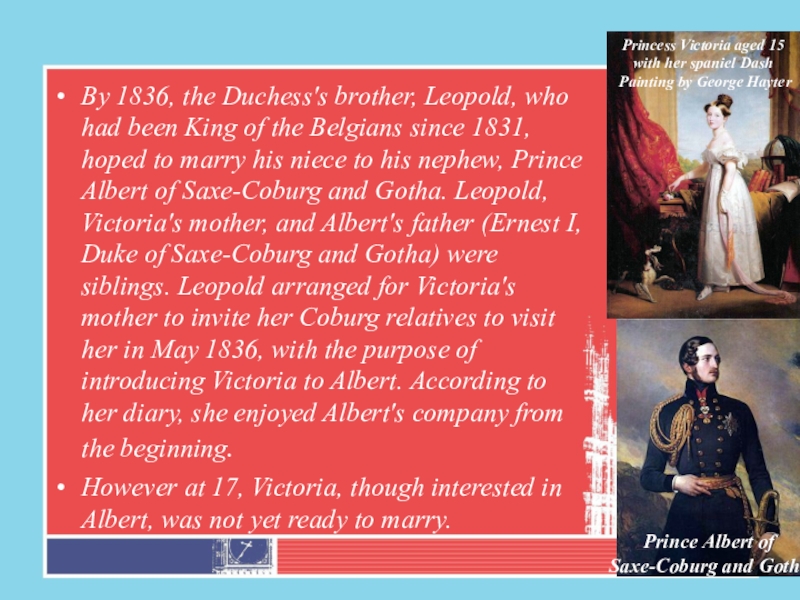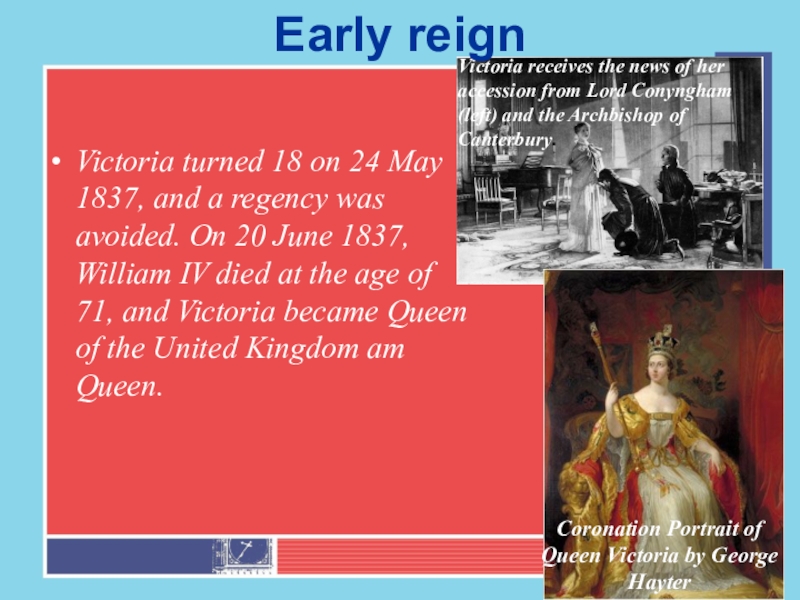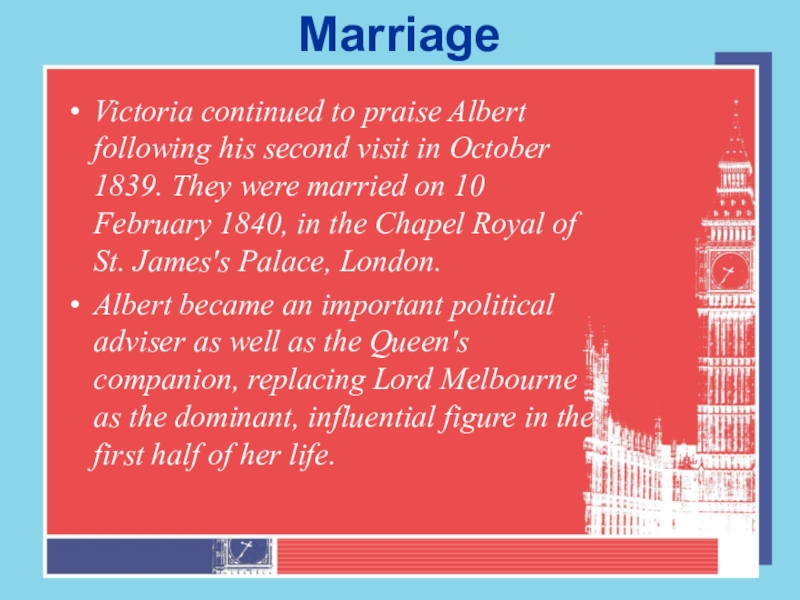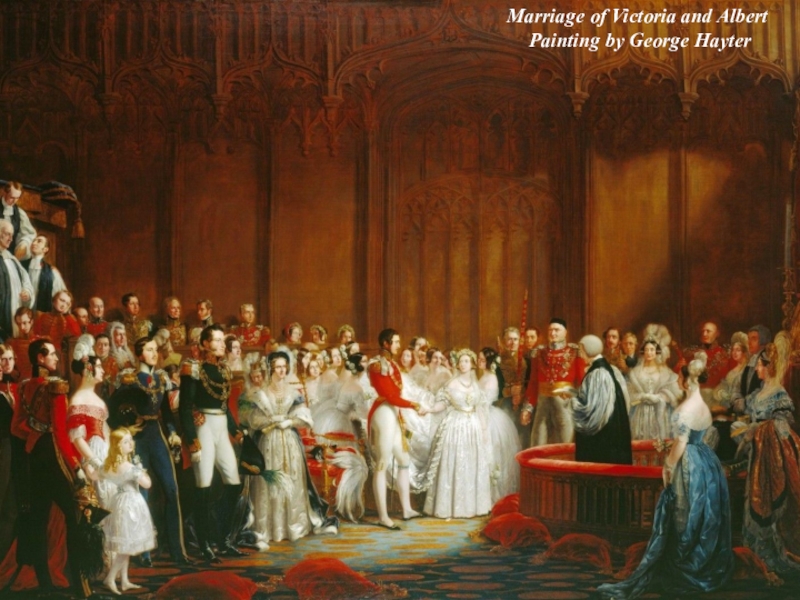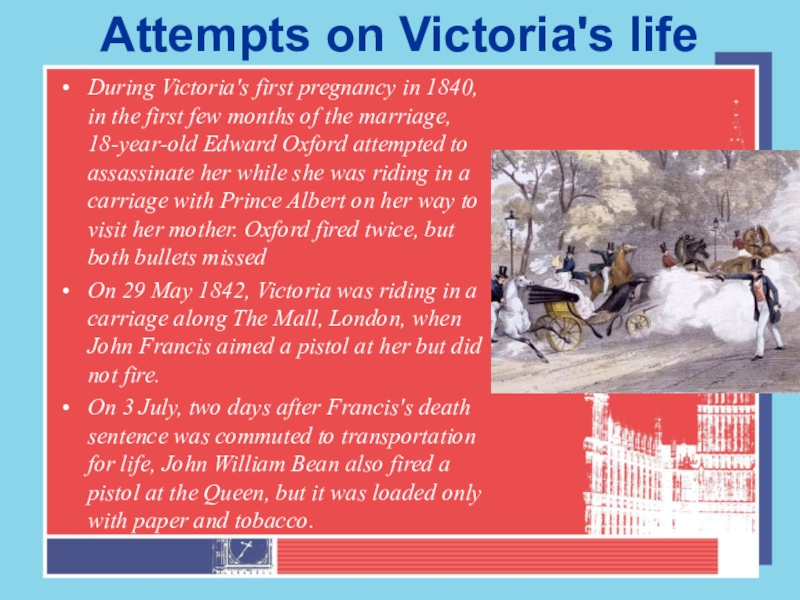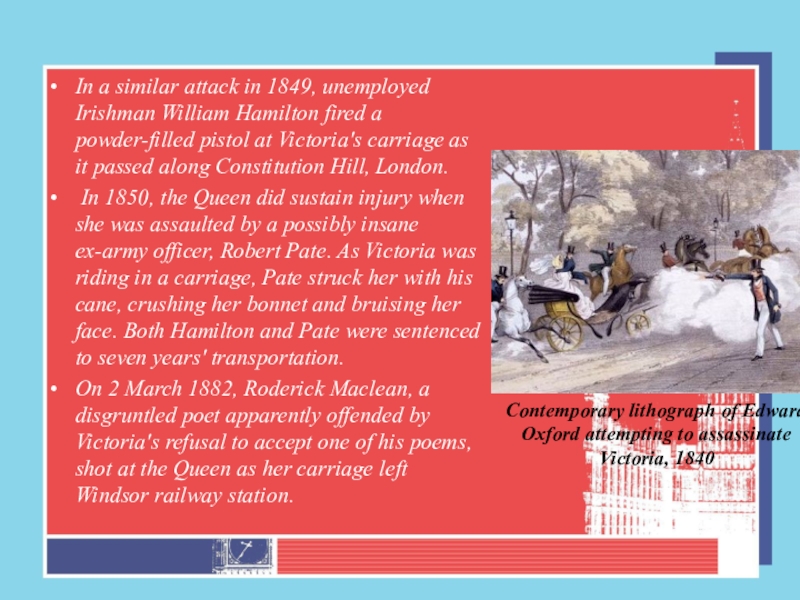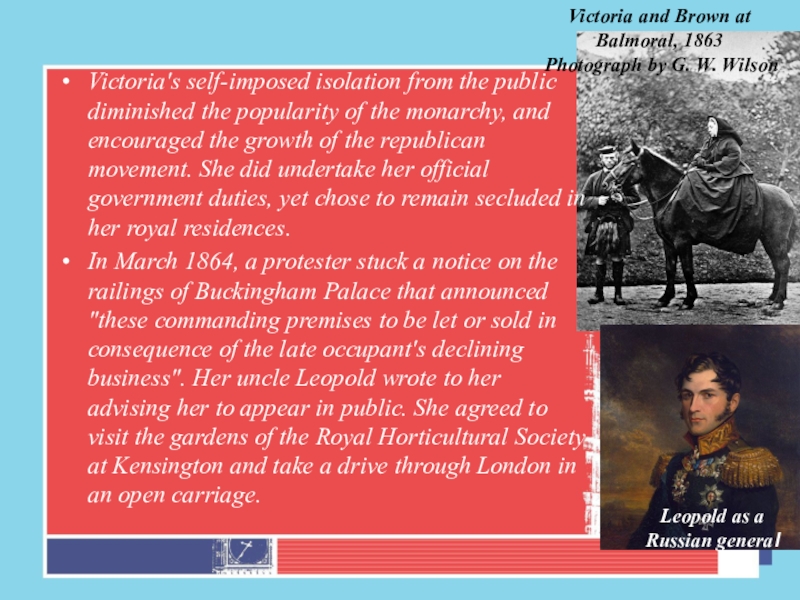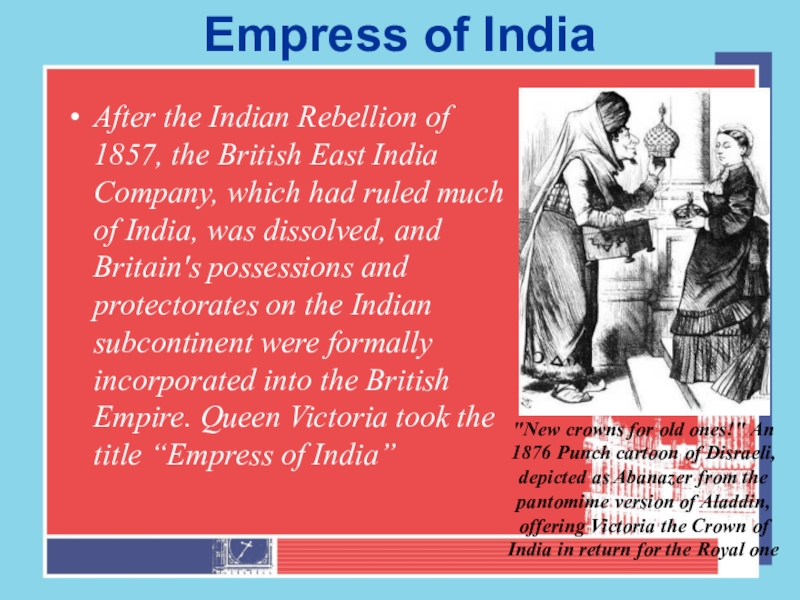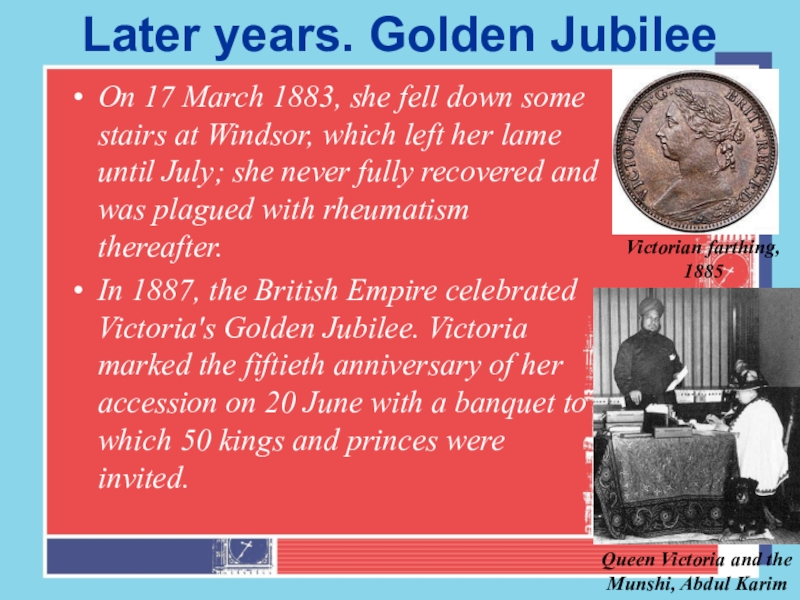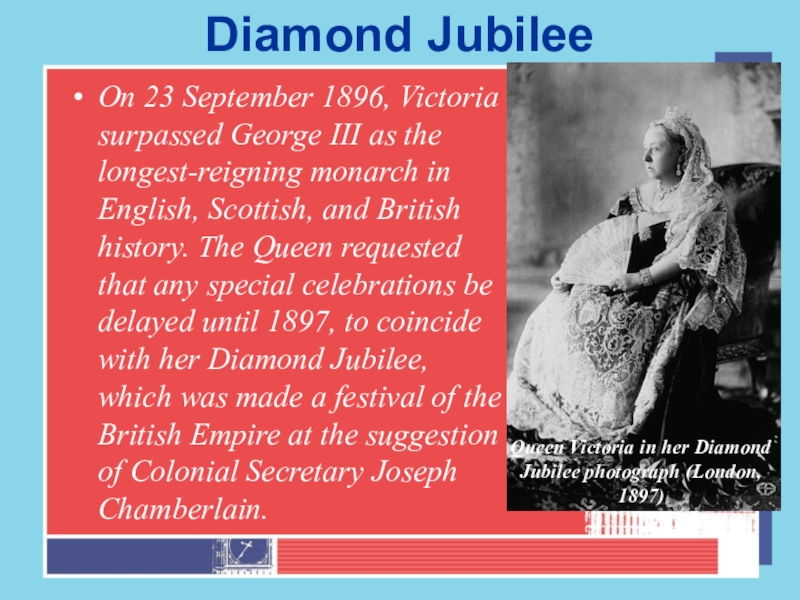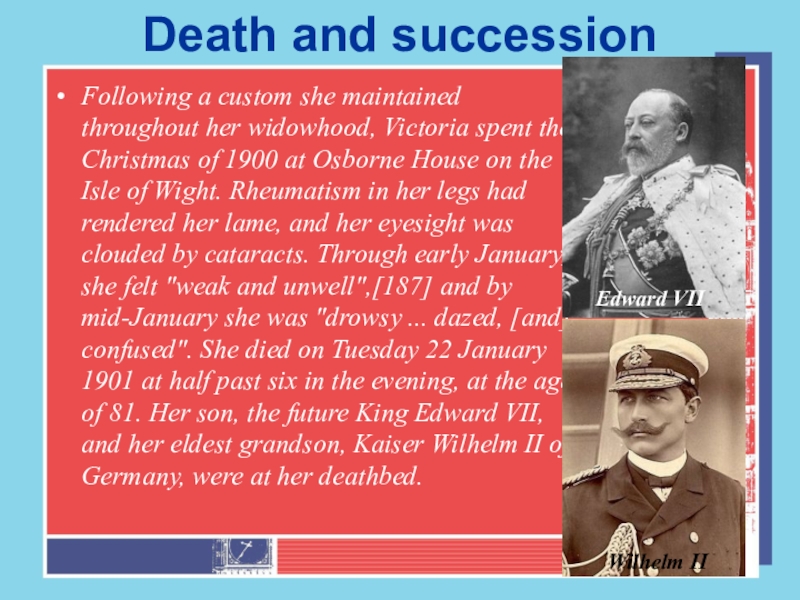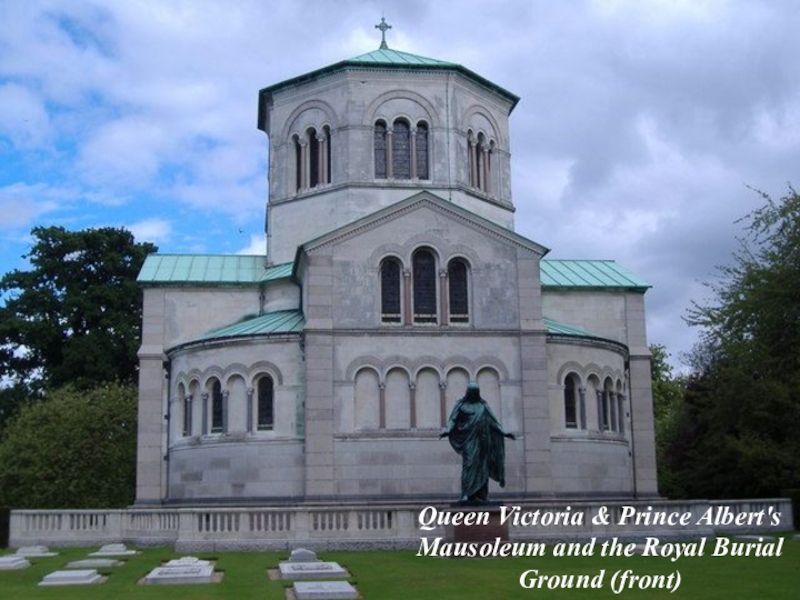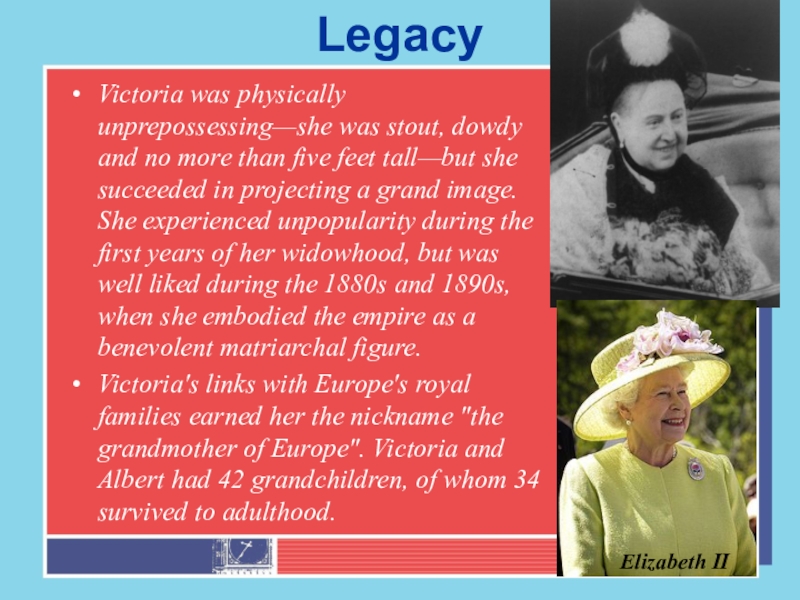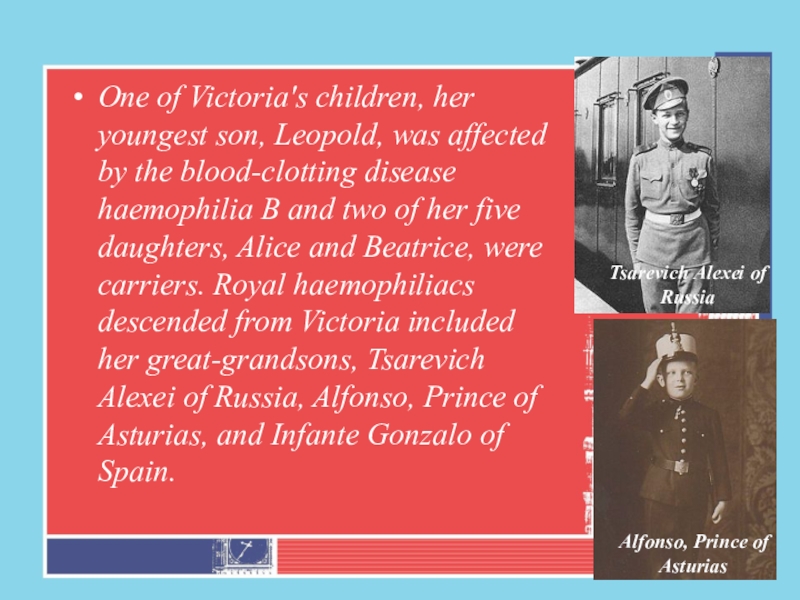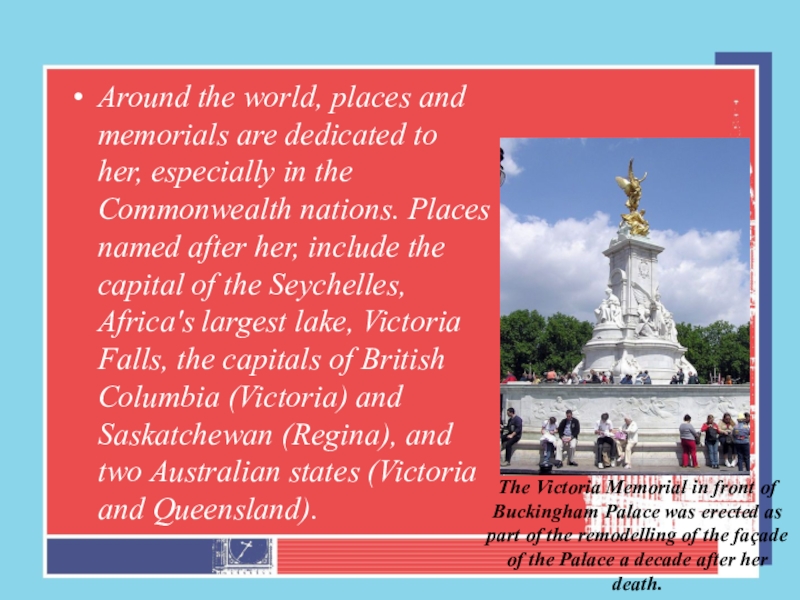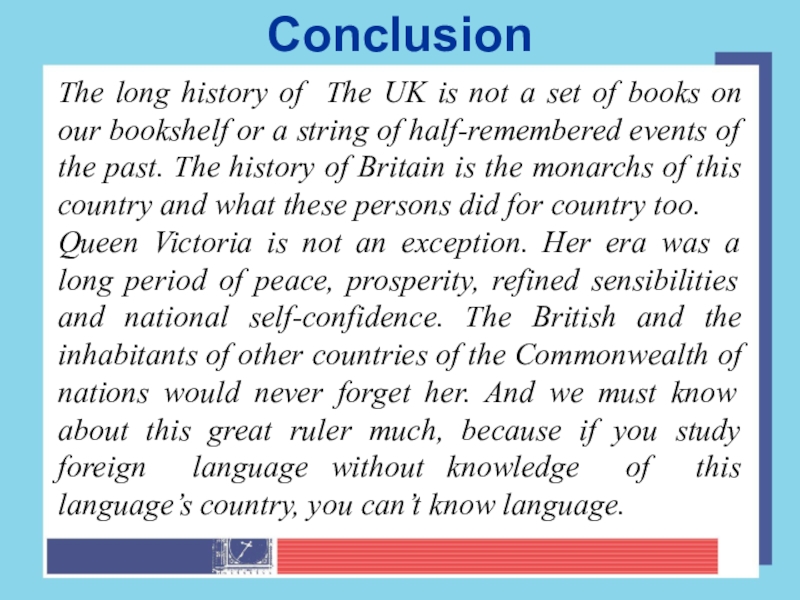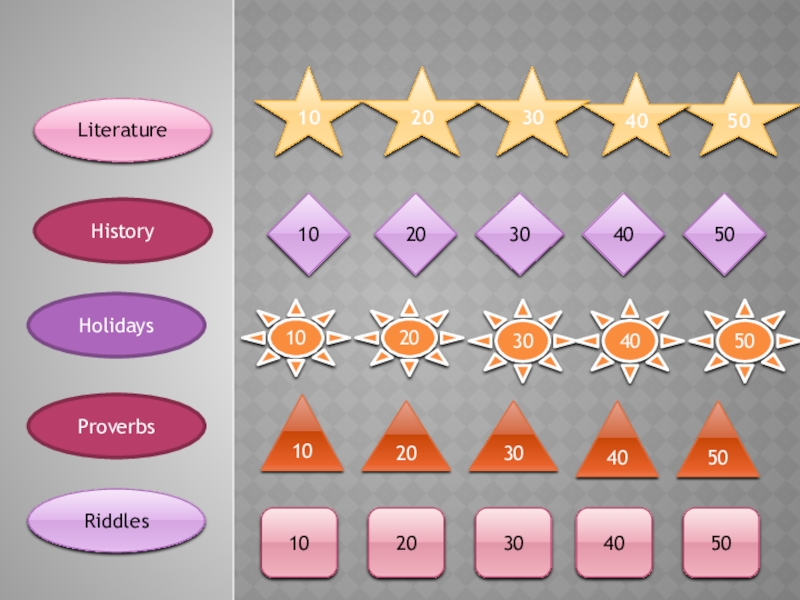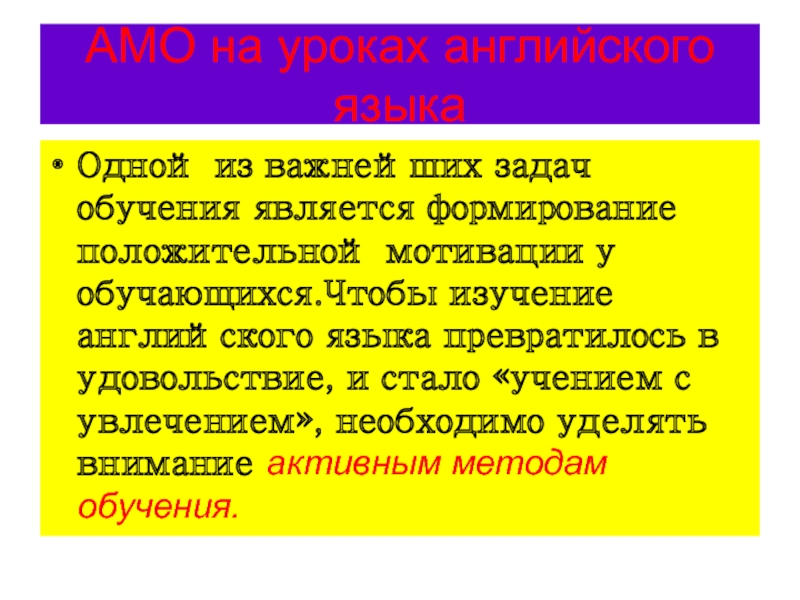- Главная
- Разное
- Образование
- Спорт
- Естествознание
- Природоведение
- Религиоведение
- Французский язык
- Черчение
- Английский язык
- Астрономия
- Алгебра
- Биология
- География
- Геометрия
- Детские презентации
- Информатика
- История
- Литература
- Математика
- Музыка
- МХК
- Немецкий язык
- ОБЖ
- Обществознание
- Окружающий мир
- Педагогика
- Русский язык
- Технология
- Физика
- Философия
- Химия
- Шаблоны, фоны, картинки для презентаций
- Экология
- Экономика
Презентация, доклад по английскому языку для 10-11 классов Королева Виктория
Содержание
- 1. Презентация по английскому языку для 10-11 классов Королева Виктория
- 2. The aim of my work is to
- 3. Victoria (Alexandrina Victoria; 24 May 1819 –
- 4. Birth and familyVictoria's father was Prince Edward,
- 5. Heiress to the throneVictoria later described her
- 6. By 1836, the Duchess's brother, Leopold, who
- 7. Victoria turned 18 on 24 May 1837,
- 8. Her coronation took place on 28 June
- 9. MarriageVictoria continued to praise Albert following his
- 10. Marriage of Victoria and Albert Painting by George Hayter
- 11. Attempts on Victoria's lifeDuring Victoria's first pregnancy
- 12. In a similar attack in 1849, unemployed
- 13. WidowhoodIn March 1861, Victoria's mother died, with
- 14. Victoria's self-imposed isolation from the public diminished
- 15. Empress of IndiaAfter the Indian Rebellion of
- 16. Later years. Golden JubileeOn 17 March 1883,
- 17. Diamond JubileeOn 23 September 1896, Victoria surpassed
- 18. Death and successionFollowing a custom she maintained
- 19. In 1897, Victoria had written instructions for
- 20. Queen Victoria & Prince Albert's Mausoleum and the Royal Burial Ground (front)
- 21. LegacyVictoria was physically unprepossessing—she was stout, dowdy
- 22. One of Victoria's children, her youngest son,
- 23. Around the world, places and memorials are
- 24. The long history of The UK is
Слайд 2The aim of my work is to know more about the
In my opinion, Queen Victoria played a great role in the life of the country. She influenced greatly its development, culture and so on.
Introduction
Слайд 3
Victoria (Alexandrina Victoria; 24 May 1819 – 22 January 1901) was
Слайд 4Birth and family
Victoria's father was Prince Edward, Duke of Kent and
The Duchess of Kent with her daughter, the future Queen Victoria
The Prince Edward, Duke of Kent and Strathearn
Слайд 5Heiress to the throne
Victoria later described her childhood as "rather melancholy".
In 1830, the Duchess of Kent and Conroy took Victoria across the centre of England to visit the Malvern Hills, stopping at towns and great country houses along the way.
Princess Victoria, aged four.
Painting by Stephen Poyntz Denning, 1823
Слайд 6
By 1836, the Duchess's brother, Leopold, who had been King of
However at 17, Victoria, though interested in Albert, was not yet ready to marry.
Princess Victoria aged 15 with her spaniel Dash
Painting by George Hayter
Prince Albert of Saxe-Coburg and Gotha
Слайд 7Victoria turned 18 on 24 May 1837, and a regency was
Coronation Portrait of Queen Victoria by George Hayter
Victoria receives the news of her accession from Lord Conyngham (left) and the Archbishop of Canterbury.
Early reign
Слайд 8
Her coronation took place on 28 June 1838, and she became
Lady Flora Hastings
Слайд 9Marriage
Victoria continued to praise Albert following his second visit in October
Albert became an important political adviser as well as the Queen's companion, replacing Lord Melbourne as the dominant, influential figure in the first half of her life.
Слайд 11Attempts on Victoria's life
During Victoria's first pregnancy in 1840, in the
On 29 May 1842, Victoria was riding in a carriage along The Mall, London, when John Francis aimed a pistol at her but did not fire.
On 3 July, two days after Francis's death sentence was commuted to transportation for life, John William Bean also fired a pistol at the Queen, but it was loaded only with paper and tobacco.
Слайд 12In a similar attack in 1849, unemployed Irishman William Hamilton fired
In 1850, the Queen did sustain injury when she was assaulted by a possibly insane ex-army officer, Robert Pate. As Victoria was riding in a carriage, Pate struck her with his cane, crushing her bonnet and bruising her face. Both Hamilton and Pate were sentenced to seven years' transportation.
On 2 March 1882, Roderick Maclean, a disgruntled poet apparently offended by Victoria's refusal to accept one of his poems, shot at the Queen as her carriage left Windsor railway station.
Contemporary lithograph of Edward Oxford attempting to assassinate Victoria, 1840
Слайд 13Widowhood
In March 1861, Victoria's mother died, with Victoria at her side.
Queen Victoria and Prince Albert, 1854
Albert in 1860
Слайд 14
Victoria's self-imposed isolation from the public diminished the popularity of the
In March 1864, a protester stuck a notice on the railings of Buckingham Palace that announced "these commanding premises to be let or sold in consequence of the late occupant's declining business". Her uncle Leopold wrote to her advising her to appear in public. She agreed to visit the gardens of the Royal Horticultural Society at Kensington and take a drive through London in an open carriage.
Leopold as a Russian general
Victoria and Brown at Balmoral, 1863
Photograph by G. W. Wilson
Слайд 15Empress of India
After the Indian Rebellion of 1857, the British East
"New crowns for old ones!" An 1876 Punch cartoon of Disraeli, depicted as Abanazer from the pantomime version of Aladdin, offering Victoria the Crown of India in return for the Royal one
Слайд 16Later years. Golden Jubilee
On 17 March 1883, she fell down some
In 1887, the British Empire celebrated Victoria's Golden Jubilee. Victoria marked the fiftieth anniversary of her accession on 20 June with a banquet to which 50 kings and princes were invited.
Victorian farthing, 1885
Queen Victoria and the Munshi, Abdul Karim
Слайд 17Diamond Jubilee
On 23 September 1896, Victoria surpassed George III as the
Queen Victoria in her Diamond Jubilee photograph (London, 1897)
Слайд 18Death and succession
Following a custom she maintained throughout her widowhood, Victoria
Edward VII
Wilhelm II
Слайд 19
In 1897, Victoria had written instructions for her funeral, which was
Her funeral was held on Saturday 2 February in St. George's Chapel, Windsor Castle, and after two days of lying-in-state, she was interred beside Prince Albert in Frogmore Mausoleum at Windsor Great Park. As she was laid to rest at the mausoleum, it began to snow.
Слайд 21Legacy
Victoria was physically unprepossessing—she was stout, dowdy and no more than
Victoria's links with Europe's royal families earned her the nickname "the grandmother of Europe". Victoria and Albert had 42 grandchildren, of whom 34 survived to adulthood.
Elizabeth II
Слайд 22
One of Victoria's children, her youngest son, Leopold, was affected by
Tsarevich Alexei of Russia
Alfonso, Prince of Asturias
Слайд 23
Around the world, places and memorials are dedicated to her, especially
The Victoria Memorial in front of Buckingham Palace was erected as part of the remodelling of the façade of the Palace a decade after her death.
Слайд 24The long history of The UK is not a set of
Queen Victoria is not an exception. Her era was a long period of peace, prosperity, refined sensibilities and national self-confidence. The British and the inhabitants of other countries of the Commonwealth of nations would never forget her. And we must know about this great ruler much, because if you study foreign language without knowledge of this language’s country, you can’t know language.
Conclusion
